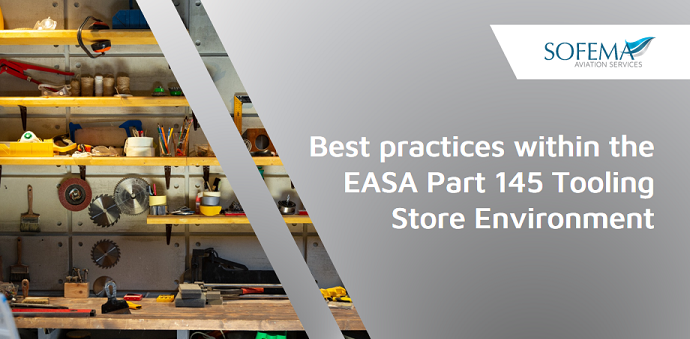Sofema Aviation Services (SAS) www.sassofia.com Considers best practices within the Tooling Store Environment.
Introduction – The importance of paying attention to housekeeping at work?
- All employees need to be aware of the housekeeping program.
- They should know how to work safely with the products and procedures they use.
- They also need to know how to protect other workers, in addition, they should understand their obligation to report any unusual conditions.
Poor housekeeping can be a cause of many types of incidents, such as:
- Tripping over loose objects on floors, stairs, and platforms
- Being hit by falling objects
- Slipping on greasy, wet, or dirty surfaces
- Walking into projecting, poorly stacked items or misplaced material
- Cutting, puncturing, or tearing the skin of hands or other parts of the body on projecting nails, wire, or steel strapping
It is important to understand that effective housekeeping is an ongoing operation rather than an occasional blitz. In fact, periodic “panic” clean-ups are both costly and ineffective in reducing incidents.
The benefits of effective housekeeping:
- To help control or eliminate workplace hazards
- To keep work areas neat and orderly
- To maintaining work areas & floors free of slip and trip hazards
- Removal of waste materials (e.g., paper, cardboard) and other fire hazards from work areas
Note – Poor housekeeping practices frequently contribute to incidents. If the sight of paper, debris, clutter, and spills is accepted as normal, then other more serious hazards may be taken for granted.
Benefits of good housekeeping practices include:
- Reduced handling to ease the flow of materials
- Fewer tripping and slipping incidents in clutter-free and spill-free work areas
- Decreased fire hazards
- Lower worker exposures to hazardous products (e.g. dusts, vapours)
- Better control of tools and materials, including inventory and supplies
- Better hygienic conditions leading to improved health
- Reduced property damage by improving preventive maintenance
- Improved productivity (tools and materials will be easy to find)
How to Promote Good Housekeeping Order
- Housekeeping order is “maintained” not “achieved.”
- Cleaning and organization must be done regularly, not just at the end of the shift.
- Integrating housekeeping into normal workflows and working practices can help ensure this is done.
- A good housekeeping program identifies and assigns responsibilities for the following:
o Clean up during the shift
o Day-to-day clean up
o Waste disposal
o Removal of unused materials
The final step to any housekeeping program is inspection. It is the only way to check for deficiencies in the program so that changes can be made.
Good Maintenance Practices
- A good maintenance program provides for the inspection, maintenance, upkeep and repair of tools, equipment, machines, and processes.
- Industrial vacuum cleaners are suitable for removing dust and dirt that is not otherwise hazardous. They have special fittings for cleaning walls, ceilings, ledges, machinery, and other hard-to-reach places where dust and dirt may accumulate.
- Dampening (wetting) floors or using sweeping compounds before sweeping reduces the amount of airborne dust. The dust and grime that collect in places like shelves, piping, conduits, light fixtures, reflectors, windows, cupboards and lockers may require manual cleaning.
Note 1 – Compressed air should not be used for removing dust, dirt, or chips from equipment or work surfaces.
Note 2 – Flammable, combustible, toxic and other hazardous materials should be stored in approved containers in designated areas that are appropriate for the different hazards that they pose.
Storage of materials should meet all requirements specified in the fire codes and the regulations of environmental and occupational health and safety agencies in your jurisdiction.
Next Steps
Sofema Aviation Services provides the following 1-day training course covering the essential areas of the Part 145 Tooling Store
Please see the following link or email team@sassofia.com
Part 145 Stores Tooling Control, Inspection Procedures & Best Practice – 1 Day
Tags:
Aircraft Tooling, aviation, Aviation Tooling Store, EASA Part 145, EASA Part 145 Stores, Housekeeping practices, Part 145 Tooling Store, SAS blogs, Tool Store Environment




